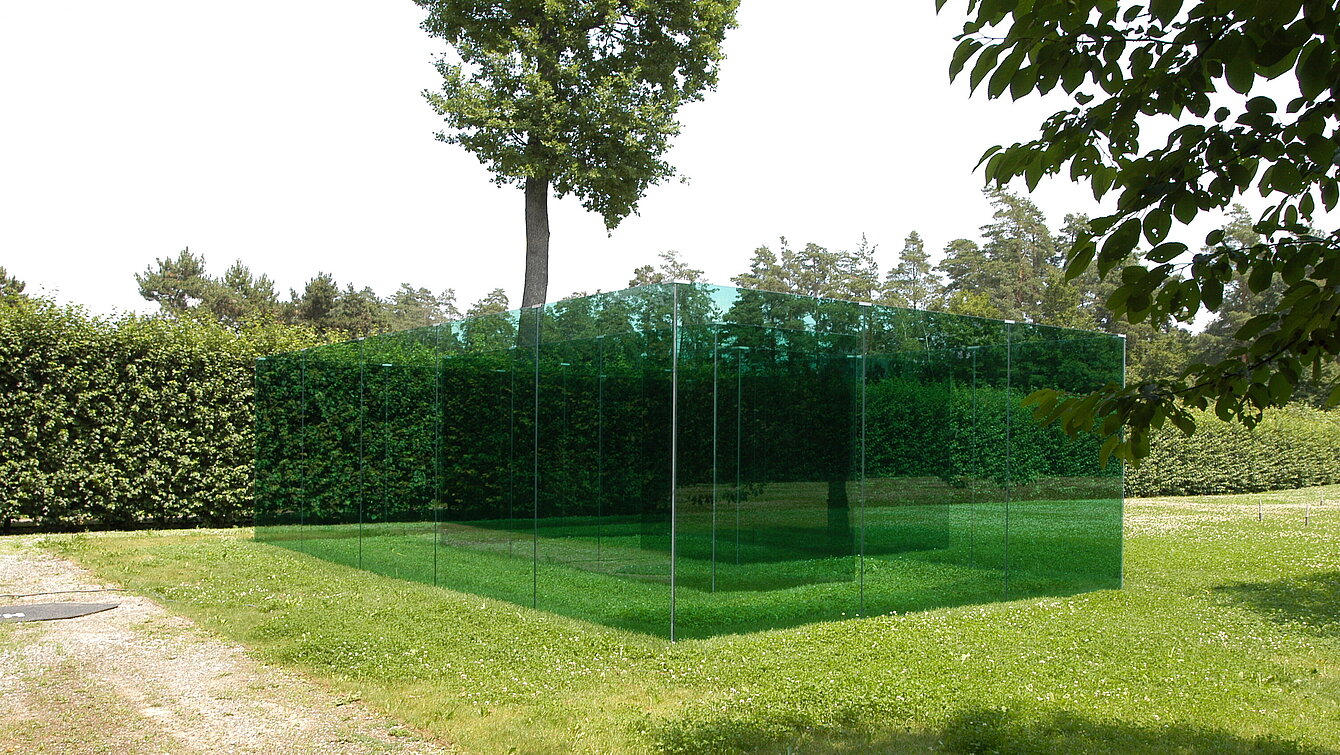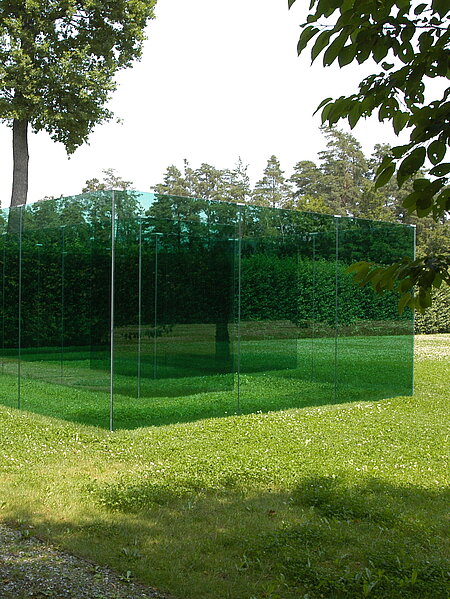This labyrinth is a giant open glass box—instead of obstructing, it allows an unrestricted view of the landscape. Our gaze becomes fixed on the glass, although at the same time we notice the image of the landscape. The glass acts like a display screen, capturing our vision —a screen that presents the world, but at the price of separation and distance from it. The designation of Labyrinth points to the fact that something transparently visible can be no less mysterious than something concealed or hidden. References for this work are the architecturally designed garden labyrinth and a beech-hedge maze close by.
Labyrinth
Matta Wagnest, 2005


Image Credits
Author
Elisabeth von Samsonow
Location on map
Position 59
Owner
Österreichischer Skulpturenpark Privatstiftung
Artist biography
Matta Wagnest
Show all
About the sculpture
The labyrinth is a structure which stimulates a searching movement. The famous Minoan labyrinth was a construction which led through a number of bends to a central bend, and from this, all the way back to the starting point, via the same turns. The Baroque period interpreted the labyrinth in the form of garden mazes, where the purpose is for the seeker to get lost, to experience a general loss of orientation. In this respect, the garden maze is/was symbolic of the world.
Matta Wamnest’s “Labyrinth” is a giant, open, vitreous box which does not block the view of the landscape; on the contrary, it grants the view without curtailment. Allusion to an inversion of the regime of orientation and vision is thus made, which has become paradigmatic for the modern period. The game of invisibility and removal, which necessitated closed and shrouded spaces (the crypt, the disassembled), is converted into open, un-disassembled visibility in the modern period.
In Matta Wagnest’s sculpture, the view condenses on the glass, on this pure transparency, whilst simultaneously resting on the landscape. The glass acts as a screen which captures the vision, a screen which presents the “world” as in the way that a TV or computer screen would, although at the cost of its separation and distance from the former.
The designation of a vitreous screen as a labyrinth makes it clear that something which presents itself as visible is no less mysterious than something which is shrouded or hidden, as it expounds the problems of the system of vision and occurrence. Size and situation designate it furthermore as a construction or a spatial installation which adds an incarnate experience of the limitations in cinema format to the visible aspect, and which occurs in front of a truly present landscape.


















